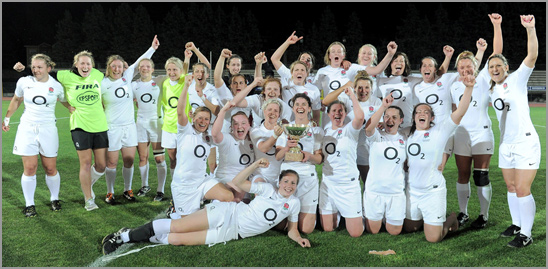Ranking women’s rugby
By John Birch
Published by Alison Donnelly, August 2, 2012
5 minute read

Who is the best? Perhaps the most common questions asked in any sport ultimately that is why all of the worlds leagues and cup tournaments were created.
But how do you compare a team from one part of the world, with one from another? And can a single one-off game really decide who is truly the best what price consistency?
It's questions like these that have seen the rise and rise of ranking lists in world sport. Complex mathematical formulae aim to take all of the bias out of argument, and concentrate on who is playing who, where, and when with points awarded accordingly. Individual sports like tennis has had rankings for many years, and in the past decade team sports like football, cricket and rugby have introduced them.
One factor in the rise of rankings is that they have a value beyond settling arguments among fans. They are vital in deciding seedings in international tournaments, for example, but are also useful in giving a context to every match otherwise random friendly internationals can gain a whole new importance when ranking points (and positions) are at stake. The sports media in particular love rankings, and there is little doubt that they make a sport easier to explain and promote.
However (unlike football and cricket) the IRBs rugby world rankings which first appeared in 2003 still only cover the mens game. Such rankings as there are in womens rugby are based solely on World Cup placings which, given a four year cycle between competitions, can quickly become out of date (and obviously only rank those teams who make the finals). With the rise in interest (and participation) in womens international rugby in recent years demand for a more scientific approach has grown among followers of the game, and official IRB womens rankings have now been promised.
This has not stopped at least two followers of the game producing unofficial rankings for womens test rugby. Serge Piques test match ranking was first published in 2009 and includes 61 national teams. Similar to the IRBs methodology for the mens game (and therefore likely to be close of any forthcoming official IRB list) Serges current top 10 are:
1. England2. New Zealand3. France4. Ireland5. Wales6. Canada7. Italy8. Scotland9. United States10. Spain
Thesystem is somewhat simpler and is based on the Elo system originally developed for chess rankings. It only includes 41 teams but curiously although significantly different to the IRBs methodology - the result is far closer to the results of the 2010 World Cup and therefore accepted rankings:
1. New Zealand2. England3. Australia4. France5. Canada6. United States7. Ireland8. Wales9. Italy10. Samoa
Although the rankings are based on same results, there are very significant differences perhaps inevitably due to the small number of womens tests each year. It will be interesting to see which of the two lists the IRB official rankings will reflect.
The above lists look at just 15-a-side test rugby, but there are ten times as many womens sevens internationals each year and Serge has also produced a ranking for the shorter game (something that the IRB do not do, even for mens rugby). It is a fascinating list with some significant differences to the recent European Championships, for example, as again the ranking rewards consistency and participation (so no room for Ireland at the top, for example). 126 nations are included in the list, with the top 20 being:
1. England2. Canada3. Spain4. Netherlands5. Australia6. United States7. Russia8. France9. China10. New Zealand11. Brazil12. Kazakhstan13. South Africa14. Portugal15. Italy16. Germany17. Japan18. Hong Kong19. Thailand20. Ukraine
Unofficial though these rankings are, it is clear from both the mens game and other international sports that this is the shape of things to come.